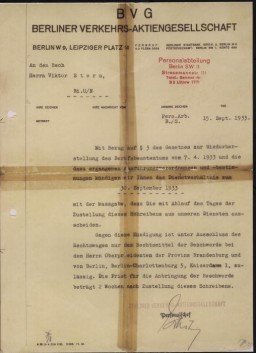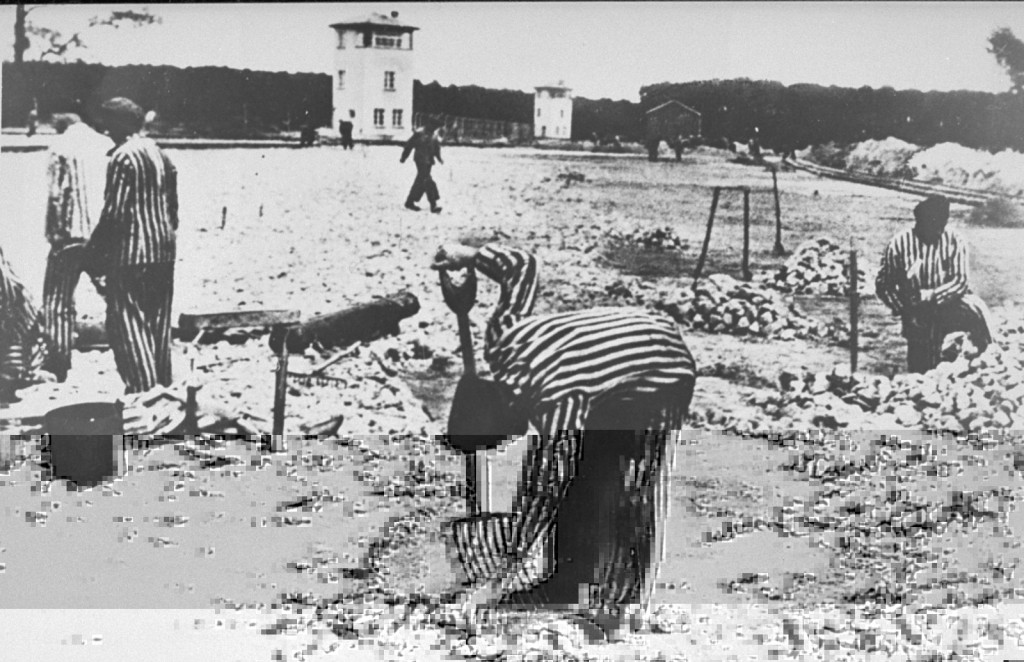You searched for: 塞拉利昂google留痕推廣【TG飞机:@bapingseo】google开户seo投放专业【TG电报:@bapingseo】谷歌竞价的工作内容【Telegram:@bapingseo】哪里找威廉希尔有中文网站吗五分赛车注册网站英皇棋牌娱乐天地足球正规投注网站?7XbtCO/059017.html
<< Previous | Displaying results 151-200 of 262 for "塞拉利昂google留痕推廣【TG飞机:@bapingseo】google开户seo投放专业【TG电报:@bapingseo】谷歌竞价的工作内容【Telegram:@bapingseo】哪里找威廉希尔有中文网站吗五分赛车注册网站英皇棋牌娱乐天地足球正规投注网站?7XbtCO/059017.html" | Next >>
-
Berlin
ArticleBerlin was home to Germany’s largest Jewish community. It was also the capital of the Third Reich and the center for the planning of the "Final Solution."
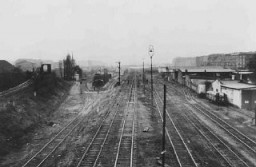
-
Hungary after the German Occupation
ArticleThe Nazis invaded Hungary in 1944 to prevent the government from negotiating an armistice with the Allies. Learn more about conditions in occupied Hungary.
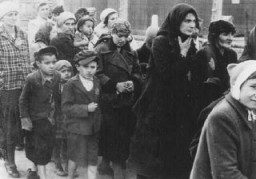
-
Locating the Victims
ArticleThe Germans and their collaborators used paper records and local knowledge to identify Jews to be rounded up or killed during the Holocaust.
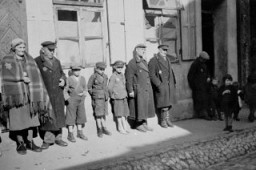
-
Death Marches
ArticleNear the end of WWII, the Germans began marching prisoners out of camps and away from the front. Read more about the brutal conditions of these death marches.
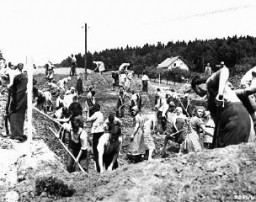
-
Jewish Partisans
ArticleSome Jews who managed to escape from ghettos and camps formed their own fighting, or partisan, units during World War II. Learn about life as a partisan.
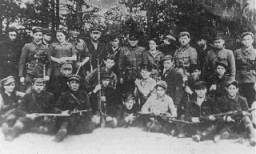
-
1938: Key Dates
ArticleExplore a timeline of key events in the history of Nazi Germany during 1938.
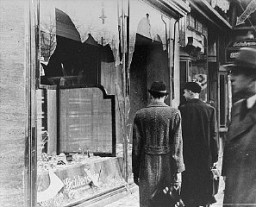
-
1939: Key Dates
ArticleExplore a timeline of key events during 1939 in the history of Nazi Germany, World War II, and the Holocaust.
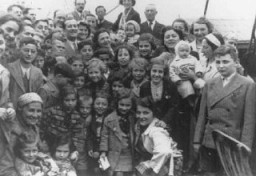
-
Wilhelm Keitel: Biography
ArticleField Marshal Wilhelm Keitel was commander of all German armed forces during World War II. Learn about his military career and postwar trial.
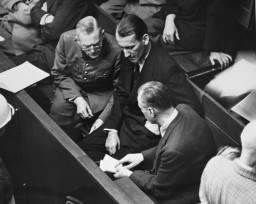
-
Althammer
ArticleThe Germans established the Althammer camp in September 1944. It was a subcamp of Auschwitz. Read more about the camp's history and conditions there.
-
The Nuremberg Code
ArticleLeading German physicians and administrators were put on trial for their role during the Holocaust. The resulting Nuremberg Code was a landmark document on medical ethics. Learn more
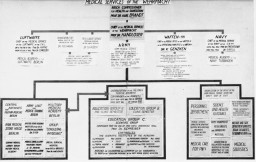
-
Belzec: Key Dates
ArticleExplore key events in the history of the Belzec killing center in the Nazi camp system. It was constructed for the sole purpose of murdering Jews.
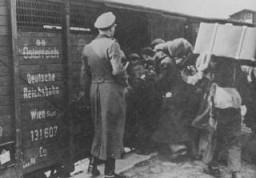
-
Zeilsheim Displaced Persons Camp
ArticleAfter WWII, many Holocaust survivors, unable to return to their homes, lived in displaced persons camps in Germany, Austria, and Italy. Read about Zeilsheim DP camp.
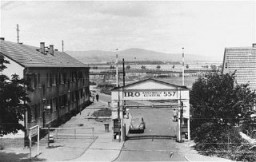
-
Soviet and US Troops Meet at Torgau
Timeline EventApril 25, 1945. On this date, Soviet and American troops met at Torgau, Germany.
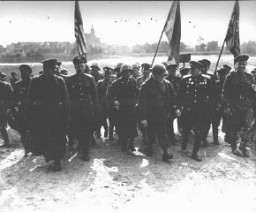
-
Treaty of Versailles Presented to German Delegation
Timeline EventMay 7, 1919. On this date, the Treaty of Versailles was presented to the German delegation. The treaty's "War Guilt Clause" forced Germany to accept responsibility for initiating WWI.
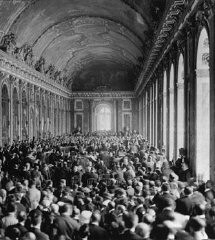
-
The 42nd Infantry Division during World War II
ArticleThe 42nd Infantry Division participated in major WWII campaigns and is recognized for liberating the Dachau concentration camp in 1945.
-
Pogroms
ArticleThe term “pogrom” historically refers to violent attacks on Jews by local non-Jewish populations. Learn about pogroms before, during, and after the Holocaust.
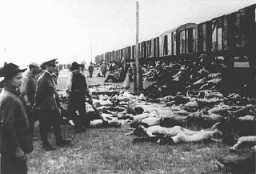
-
Gerda Blachmann Wilchfort describes the mood of passengers on the "St. Louis" after they were denied entry into Cuba
Oral HistoryGerda and her parents obtained visas to sail to Cuba on the "St. Louis" in May 1939. When the ship arrived in Havana harbor, most of the refugees were denied entry and the ship had to return to Europe. Gerda and her parents disembarked in Belgium. In May 1940, Germany attacked Belgium. Gerda and her mother escaped to Switzerland. After the war, they were told that Gerda's father had died during deportation.
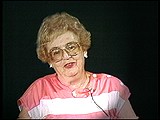
-
Axis Powers in World War II
ArticleThe three principal partners in the Axis alliance were Germany, Italy, and Japan. Learn more about the Axis powers in WW2.
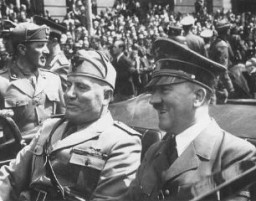
-
Heinrich Himmler
ArticleSS Chief Heinrich Himmler was chief architect of the "Final Solution." Learn more about Himmler, one of the most powerful men after Hitler in Nazi Germany.
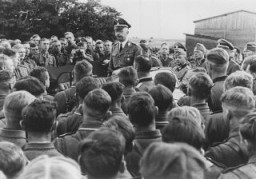
-
Börgermoor Camp
ArticleBörgermoor was part of the Nazi regime’s early system of concentration camps. It was located in the Emsland region of Prussia.
-
Abraham Bergman
ID CardAbraham was born to a Jewish family in Krasnik, a town in the Lublin district of Poland. The town had a large Jewish population. Abraham's father was a tailor. When Abraham was 2, his mother died and he was raised by his grandmother. At the age of 7, Abraham started public school. 1933-39: Abraham liked school but found it difficult. The Christian children often yelled at the Jews, "You killed our God." One year, on the day before Christmas break, some kids brought ropes tied to iron weights to school.…
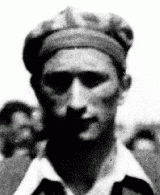
-
Barbara Ledermann
ID CardBarbara was the older of two daughters born to Jewish parents in Germany's capital, Berlin. Barbara's father was a successful lawyer. As soon as Barbara was old enough to walk, he would take her around Berlin to see the sights and tour the city's art museums. Barbara liked to go horseback riding and dreamed of becoming a dancer. 1933-39: After the Nazis came to power in January 1933, it was illegal for Barbara's father to have non-Jewish clients. His law practice quickly folded. Later that year when…
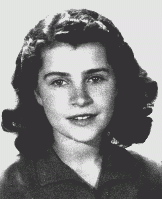
-
Gertrud Gruenbaum
ID CardBorn to a Jewish father and a Catholic mother, Gertrud grew up in Vienna. Trude, as she was affectionately called, attended a public secondary school, where half of her classmates were Jewish. At age 7 she rejected music lessons for classes in dancing and acting. Trude wanted to be like Greta Garbo. She launched an acting career at age 18, assuming the stage name Trude Hermann. 1933-39: Because Gertrud was Jewish she couldn't get acting jobs in Austria and nearby Sudetenland. In 1937 her agent found work…
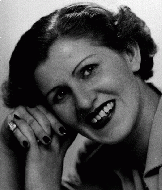
-
Franco Cesana
ID CardFranco was born to a Jewish family living in the northern Italian city of Bologna. Even though a fascist leader, Benito Mussolini, came to power in Italy in 1922, Bologna's Jews continued to live in safety. Like many Italian Jews, Franco's family was well integrated in Italian society. Franco attended public elementary school. 1933-39: When Franco was 7, Mussolini enforced "racial" laws against the Jews: Franco was expelled from school, and went instead to a Jewish school hastily organized in makeshift…
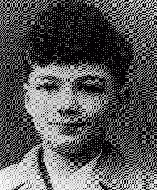
-
Marcus Fass
ID CardMarcus, known to his family as Moniek, was one of three children born to a Jewish family in the Polish town of Ulanow. His father worked as a tailor. Ulanow's Jewish community had many of its own organizations and maintained a large library. From the age of 3, Moniek attended a religious school. He started public school when he was 7. 1933-39: In 1935 Moniek's father left for America to find a job so that his family could later join him. He sent money to them while they waited for their emigration papers.…
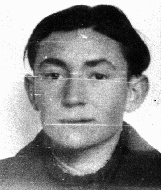
-
Selma Wijnberg
ID CardSelma was the youngest of the Wijnberg's four children, and the only daughter. When she was 7, her family left Groningen to start a business in the town of Zwolle [in the Netherlands]. There her parents ran a small hotel popular with Jewish businessmen traveling in the area. Every Friday there was a cattle market, and many of the cattle dealers came to the Wijnberg's hotel for coffee and business. 1933-39: At home Selma and her family were observant of Jewish tradition because her mother was religious.…
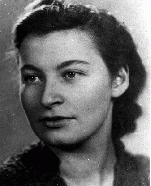
-
Inge Auerbacher
ID CardInge was the only child of Berthold and Regina Auerbacher, religious Jews living in Kippenheim, a village in southwestern Germany near the Black Forest. Her father was a textile merchant. The family lived in a large house with 17 rooms and had servants to help with the housework. 1933-39: On November 10, 1938, hoodlums threw rocks and broke all the windows of Inge's home. That same day police arrested her father and grandfather. Inge, her mother and grandmother managed to hide in a shed until it was…
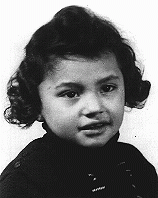
-
Zigmond Adler
ID CardZigmond's parents were Czechoslovakian Jews who had emigrated to Belgium. His mother, Rivka, was a shirtmaker. She had come to Belgium as a young woman to find a steady job, following her older brother, Jermie, who had moved his family to Liege several years earlier. In Liege, Rivka met and married Otto Adler, a businessman. The couple looked forward to raising a family. 1933-39: Zigmond was born to the Adlers in 1936, but his mother died one year later. His father remarried, but the marriage didn't last.…
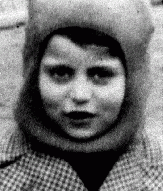
-
Henoch Kornfeld
ID CardHenoch's religious Jewish parents married in 1937. His father, Moishe Kornfeld, and his mother, Liba Saleschutz, had settled in Kolbuszowa, where Henoch's mother was raised. There, Liba's father bought the newlyweds a home and started his new son-in-law in the wholesale textile business. 1938-39: Henoch was born in late 1938, and was raised among many aunts, uncles and cousins. Around Henoch's first birthday, Germany invaded Poland and soon reached Kolbuszowa. Polish soldiers on horses tried to fight…
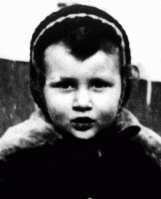
-
Gregor Wohlfahrt
ID CardGregor was born in a village in the part of Austria known as Carinthia. During World War I, he served in the Austro-Hungarian army and was wounded. Raised a Catholic, Gregor and his wife became Jehovah's Witnesses during the late 1920s. Gregor supported his wife and six children by working as a farmer and quarryman. 1933-39: The Austrian government banned Jehovah's Witness missionary work in 1936. Gregor was accused of peddling without a license and briefly jailed. When Germany annexed Austria in 1938,…
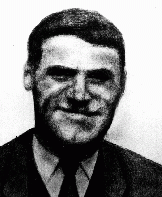
-
Hacia Rivkina
ID CardHacia was the oldest of three girls born to a Jewish family in Minsk, the capital of Belorussia. Before World War II, more than a third of the city was Jewish. Hacia's father worked in a state-owned factory building furniture, an occupation in which several of his relatives also made a living. Hacia attended Soviet public schools throughout the late 1920s and early 1930s. 1933-39: The Rivkins' home was in central Minsk, on Novomesnitskaya Street. Hacia was a talented singer and was known as being the best…
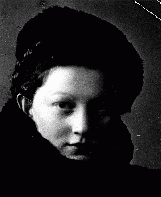
-
Ben Stern
ID CardBen was born to Jewish parents in Warsaw. When Ben was 7, his family moved to Mogielnica, about 40 miles from Warsaw. Ben's father spent much of his time studying religious texts. His wife managed the family liquor store. Ben attended public school during the day and was tutored in religious studies in the evening. 1933-39: After attending school in Warsaw, Ben returned home to help in the family's liquor store. One day, there was a mass demonstration in town. People chanted, "Don't buy from the Jews!"…
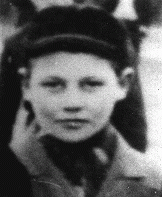
-
Blimcia Lische
ID CardBlimcia's parents were religious Jews. Her father, Shaya David, and her mother, Malcia Saleschtz, had settled in Kolbuszowa, where Blimcia's mother had been raised. There, Malcia's father bought the newlyweds a home and started his new son-in-law in the wholesale flour business. 1933-39: Blimcia was born in 1938, and was raised among many aunts, uncles and cousins. Around Blimcia's first birthday, Germany invaded Poland and soon reached Kolbuszowa. Polish soldiers on horses tried to fight against the…
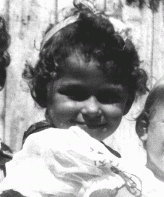
-
Yves Oppert
ID CardYves' mother died when he was 7, and he grew up in the home of his grandfather, who was the chief Ashkenazi rabbi of Paris. Yves became a successful businessman, owning a chain of department stores. He was an avid mountain climber and liked to play tennis and to race cars and motorcycles. As a young man, Yves did his military service in France's alpine corps. 1933-39: In 1934 Yves married Paulette Weill, and the couple had two daughters, Nadine in 1935 and Francelyn in 1939. He was called up by the French…
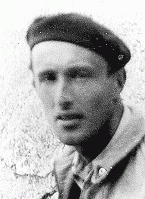
-
Magdalena Kusserow
ID CardOne of 11 children, Magdalena was raised as a Jehovah's Witness. When she was 7, her family moved to the small town of Bad Lippspringe. Her father was a retired postal official and her mother was a teacher. Their home was known as "The Golden Age" because it was the headquarters of the local Jehovah's Witness congregation. By age 8 Magdalena could recite many Bible verses by heart. 1933-39: The Kusserow's loyalty was to Jehovah, so the Nazis marked them as enemies. At 12 Magdalena joined her parents and…
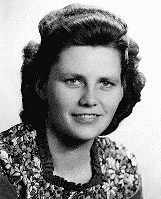
-
Thomas Pfeffer
ID CardThomas' father, Heinz, was a German-Jewish refugee who had married Henriette De Leeuw, a Dutch-Jewish woman. Frightened by the Nazi dictatorship and the murder of Heinz's uncle in a concentration camp, they immigrated to the Netherlands when Henriette was nine months pregnant with Thomas' older brother. They settled in Amsterdam. 1933-39: Thomas, also known as Tommy, was born 18 months after his older brother, Jan-Peter. In 1939 the parents and brother of Tommy's father joined them in the Netherlands as…
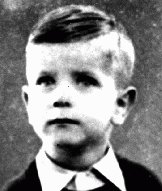
-
Nazi Racism
ArticleNazi racism and racial antisemitism ultimately led to mass murder and genocide. Learn more about Nazi racial ideology.
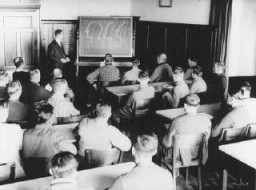
-
Barbara Nemeth Balint
ID CardBarbara was born to a middle-class Jewish family in southeast Hungary. Her father had a store that carried grocery and hardware items. Barbara had a sister named Margit and a brother named Desider. In 1928 Barbara married Istvan Geroe and moved to the town of Torokszentmiklos. Her son, Janos, was born there a year later. 1933-39: In 1933 Barbara divorced and returned with 3-year-old Janos to her parents' home in the town of Szentes. She helped run her parents' store, which was located on a busy inter-city…
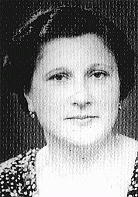
-
Janos Geroe
ID CardJanos was the only child born to a Jewish family in the small agricultural city of Torokszentmiklos, about 65 miles southeast of Budapest. His father, who had a degree in pharmacology, joined his family's grain exporting business. 1933-39: In 1933, when Janos was 4 years old, his parents divorced. According to Hungarian law, Janos was to live with his mother until he was 7 and then return to his father. Janos moved with his mother to her hometown of Szentes, where he began studying at a religious primary…
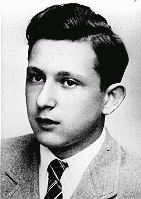
-
Shaye Rothkopf
ID CardShaye's town in the province of Lodz had a Jewish community that comprised almost one-third of the town's population. Shaye was very young when his father died during World War I. Afterwards, his grandparents helped to support his family. When Shaye was a teenager, his mother died. He and his siblings then lived with their grandparents. 1933-39: Swimming was Shaye's favorite pastime and he'd go with his friends to the banks of the Vistula River on every possible occasion. He worked in Lodz for a company…
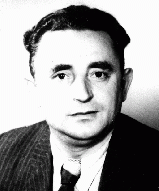
-
Rifka Fass
ID CardRifka was the oldest of three children born to a Jewish family in the Polish town of Ulanow. Ulanow's Jewish community had many of its own organizations and maintained a large library. From the age of 3, Rifka attended a private religious school for girls where she learned Jewish history and Hebrew. At 7 she started public school. Rifka's father worked as a tailor. 1933-39: In 1935 Rifka's father went to America to find a job so his family could later join him. While waiting for immigration papers,…
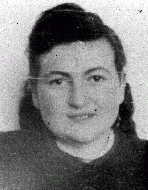
-
Johanna Falkenstein Heumann
ID CardThe oldest of five children, Johanna was born to Jewish parents living in a small town near Cologne. Her father owned a cigar factory. After Johanna graduated from high school, she worked in a bank in Cologne. At 22 she married Carl Heumann and the couple settled in the village of Hellenthal near the Belgian border. There they owned a general store. The couple had two daughters, Margot and Lore. 1933-39: A year ago Johanna's family moved to nearby Bielefeld, and she enrolled Margot and Lore in the city's…
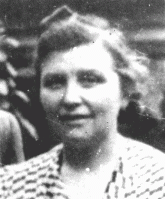
-
Edek Blonder
ID CardThe Blonder family lived in a two-room apartment in the back of a store. Edek was the third of eight children. His father eked out a meager living by tutoring students in Jewish subjects, and beginning in 1930 he worked distributing food vouchers to the poor. 1933-39: After graduating from secondary school, Edek was invited to play soccer professionally on the local Club Maccabi team, which was part of a Jewish soccer league. Club Maccabi arranged for him to attend trade school to learn cabinet making at…
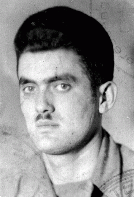
-
Leon Kusmirek
ID CardLeon was the oldest of two boys born to a Jewish family in Zgierz, a central Polish town in the heart of Poland's textile producing region. The family lived at 15 Konstantynowska Street. Leon's father worked at a textile factory. At age 7, Leon began attending public school in the morning and religious school in the afternoon. 1933-39: On Friday, September 1, 1939, Leon's mother had just returned from the market when the family saw German planes. On Sunday they flew over again, lower, panicking the city.…
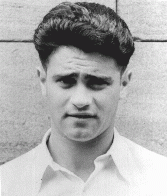
-
Moses Rechnitz
ID CardThe younger of two children, Moses was born to Jewish parents living in the southwestern Polish town of Bedzin. When he was 7, his family moved to the nearby city of Katowice where his father had a wholesale leather business. The Rechnitzes lived in a three-bedroom, upper-floor apartment on Jordana Street. Moses attended a Polish elementary school and also received religious instruction. 1933-39: In secondary school, Moses was one of the only Jewish pupils. He first encountered antisemitism when a teacher…
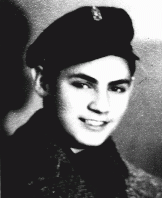
-
Adela Low
ID CardAdela, known as Udl to her family, was one of four children born to a Jewish family in the Polish town of Ulanow. Her father was a landowner and cattle merchant, transporting calves from the Ulanow area for sale in other towns in the region. From the age of 3, Adela attended a private religious school for girls where she learned Jewish history and Hebrew. At age 7 she began public school. 1933-39: Adela came from a charitable family; when her mother baked challah, a special bread for the Jewish Sabbath,…
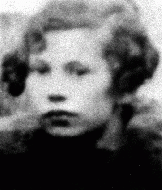
-
Herschel Low
ID CardHerschel was the oldest of four children born to a Jewish family in the Polish town of Ulanow. His father was a landowner and cattle merchant who transported calves from the Ulanow area for sale in other towns. Herschel attended a religious school from the age of 3, and started public school at age 7. 1933-39: Since Herschel was skilled with his hands, his father got him a job weaving reed baskets after he graduated from high school. Herschel was also a member of a Jewish youth organization, Benei Akiva,…
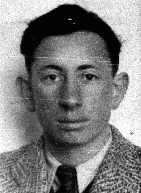
-
Mieczyslaw (Marek) Madejski
ID CardMieczyslaw was the eldest of three sons born to well-to-do Roman Catholic parents in Poland's capital of Warsaw. His father was a real estate developer and his mother was a housewife. Mieczyslaw, or Mieteck as he was nicknamed, began attending public elementary school in 1930 when he was 7 years old. 1933-39: Mieczyslaw's father urged him to study either German or Russian because he thought it was likely that there would be a German or Soviet invasion. Germany invaded Poland on September 1, 1939. During…
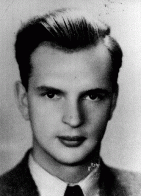
-
Refugees Today
ArticleAs of mid-2022, there were about 27 million refugees. Learn more about these refugees, the violence they face, and the global impact of the refugee crisis.
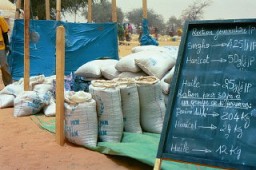
-
Dismissal letter from the Berlin transit authority
DocumentA letter written by the Berlin transit authority (Berliner Verkehrs Aktiengesellschaft) to Viktor Stern, informing him of his dismissal from his post with their agency as of September 20, 1933. This action was taken to comply with provisions of the Law for the Restoration of the Professional Civil Service. On April 7, the German government issued the Law for the Restoration of the Professional Civil Service (Gesetz zur Wiederherstellung des Berufsbeamtentums), which excluded Jews and political opponents…
